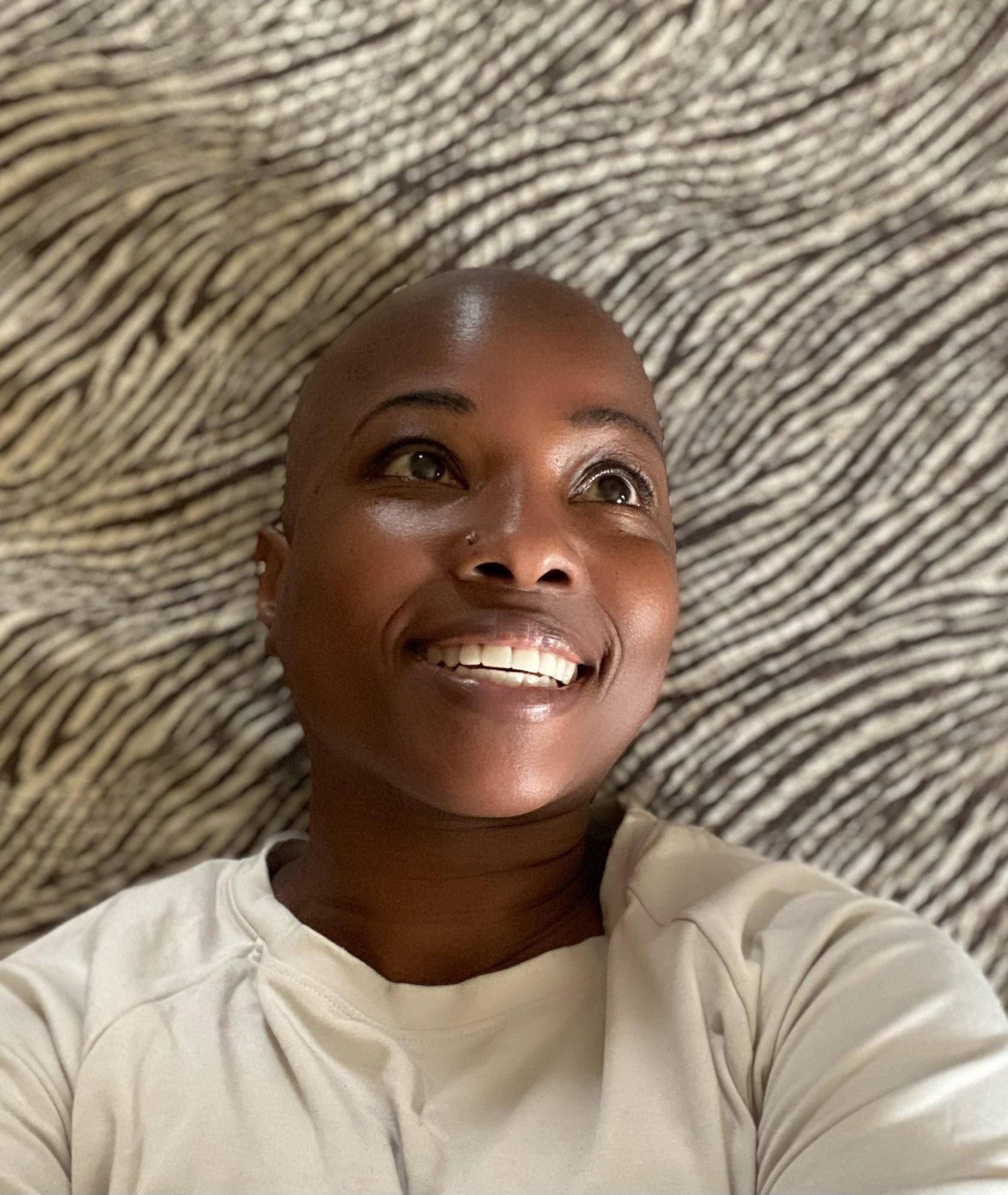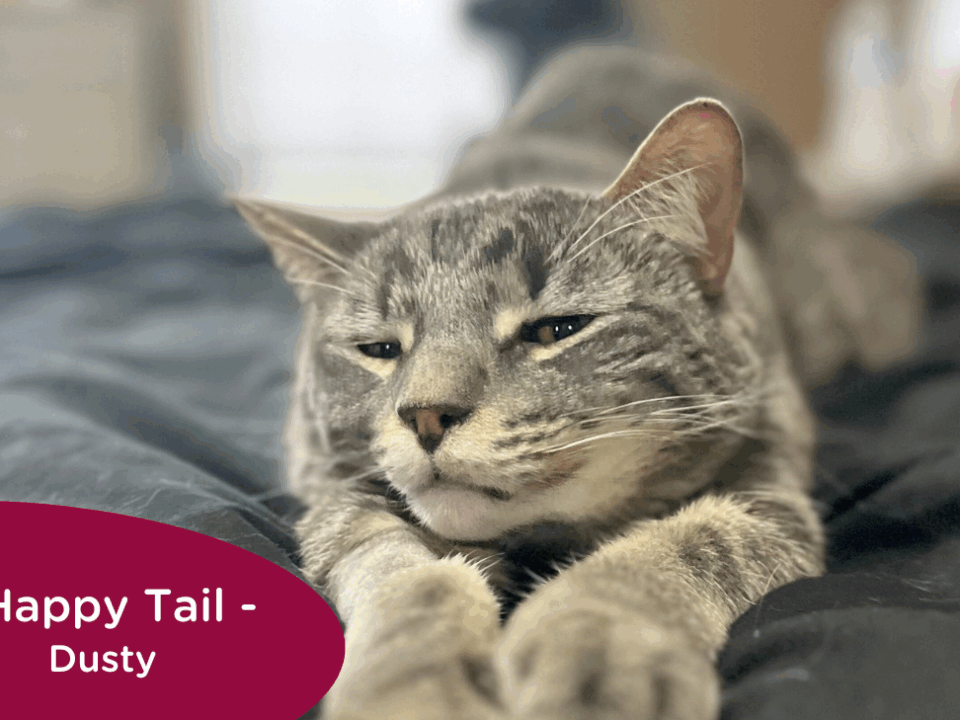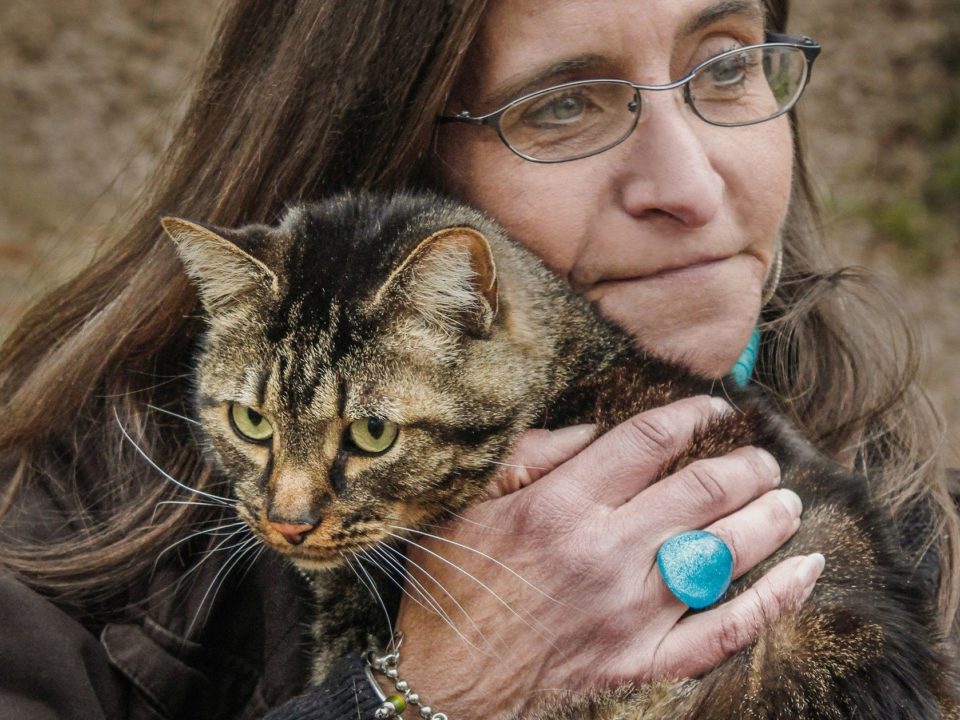Opening windows to others’ worlds: Q&A with Dr. Worokya Duncan
February 1st, 2022
In our efforts to ensure that RedRover Readers and Kind News magazine are inclusive and accessible to diverse students and educators, we worked with education consultant Dr. Worokya Duncan. Dr. Duncan is a professional educator with 20 years of classroom experience and degrees in Public Policy Studies, Political Science, Theology, and Education. Below is an excerpt about our process.
RedRover: RedRover and many other animal welfare organizations recognize that systemic racism has impacted their abilities to help animals and achieve their missions. From your perspective, why do you feel it is important for the animal welfare sector to address its lack of diversity?

Dr. Duncan and her dog
Dr. Duncan: Thinking back to how I grew up, there was an idea that certain people had certain types of animals, and the way someone might behave toward those people was also the way someone might behave towards those animals. There were automatic biases that seemed to be part of the story. I remember seeing a lot of people who looked like me who had pit bulls (I have a pit bull now), and I remember being afraid of them and the dogs, not because of anything they had ever done or said to me, but solely based off what I had seen on television, where every single time you’d see a Black person with a dog, or someone with tattoos with a dog, you automatically have to be afraid of that person and the animal. So, those narratives don’t come out of nowhere and you can’t just end them by saying don’t be afraid of people, don’t be afraid of these dogs. There needs to be an excavation of how these stories get created. How do these stories get disseminated? And how can we use the same process that created [these narratives] to reverse the story? I think that is something that RedRover does consistently.
RedRover: What were your initial impressions of the RedRover Readers program?
Dr. Duncan: What drew me to you all was that you weren’t satisfied with what you were doing, and you were looking at what was going on in the world at the time. There are people who can’t concern themselves as much with caring for animals because between leaving their home and going to work or going to school, they have to worry about “Am I going to get back?” Not just to my pet, but am I just going to get back [home]. Part of the program is making sure that you’re paying attention to the lives of the people who are caring for these animals. What could they be feeling? What could they be thinking? What do students not have the capacity to grasp because they are so wrapped up in all this other stuff going on in the world? And then the people who are working with you, what are they thinking about and worried about?
So in reading the [Kind News] articles, reading the [RedRover Readers] lessons, looking at the language that was used for certain people, looking at some of the activities, I was just thinking a little further: Who is able to access [these materials], who isn’t able, and why aren’t they able to? It wasn’t a heavy ask for me to work with you, because you all were so amenable to every single suggestion.
RedRover: What kinds of advice or changes did you recommend?
Dr. Duncan: There were just a couple of things in the activities: making sure if there were children who may be on the autistic spectrum and weren’t able to, for example, judge how a person was feeling by looking at them because they don’t have the same type of facial recognition awareness that we do. I also recommended expanding on certain topics and clarifying language that not all people automatically understand — like what diversity means, what inclusion means, and what belonging means. Some people conflate all three, not understanding that you can say that there is a diversity to things, like lots of seasonings, but you have no clue how to use them in your food.
You might read a story to a kid assuming they know that this is how dogs normally act, or how a kid would normally act around an animal, but we can’t ever assume they understand the body language or the language, period. That was another reason why I loved seeing the stories from other countries, so that kids are not like, “Oh, well, this is just how dogs are everywhere, and dogs are pets everywhere.” No, this is how we treat dogs here; this is how we care for them here. It’s almost like geo-political awareness in the most accessible, low-stakes way: through children’s literature.

Dr. Worokya Duncan
RedRover: How will these changes be helpful to students and animals?
Dr. Duncan: I remember taking the SATs and there were certain questions about horse care. I never had interactions with horses when I was little. [RedRover] is giving kids who might never have that opportunity [to interact with animals] a window into somebody else’s world. When we think of education as both mirror and window, I should be able to see myself and I should be able to have the opportunity to see others as they define themselves. That’s something that you all are doing at RedRover, and I honestly don’t see that in a lot of other programs. I see lots of windows, not enough mirrors, and you all are doing both.
RedRover: What would you say to educators thinking of implementing the RedRover Readers program or using Kind News magazine in their classrooms?
Dr. Duncan: Any class can use it. Just get it, and then gift it to another school that might not be able to afford it.
Learn more about RedRover’s DEI action plan at RedRover.org/DEI.


